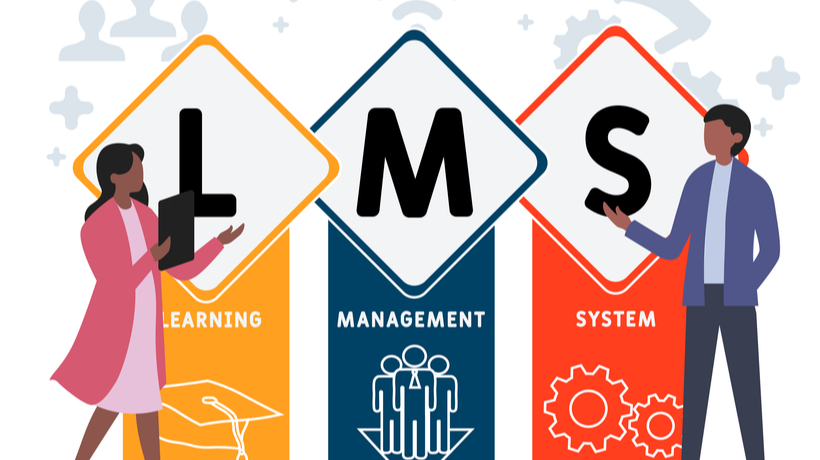SaaS LMS For The Education Industry
As today's education system verges on becoming more and more digital, eLearning tools are increasingly necessary for students and teachers alike. The best eLearning platforms allow educators to customize learning plans according to their students' needs, interests, and strengths. The education industry is growing by the day; schools are adopting eLearning platforms that make online education and interaction with teachers easier, and students are embracing mobile technologies to access their educational content from anywhere.
One thing that needs to be noted is that a software-as-a-service learning management system is an online option for eLearning. An LMS is web-based. This implies that it's available on the internet and is constantly connected to the internet so you can use it whenever and wherever you want. When you're looking for a new LMS, make sure you know whether the one you're choosing is SaaS or not.
What Is An LMS?
A learning management system (LMS) is a cloud-based software that allows management, tracking, reporting, and development of employee training, from onboarding to ongoing education. An eLearning solution enables companies to build, deliver, and track their own training programs or hire a professional service bureau to create and manage them. With an LMS in place, employees can easily access training content from most devices without traveling off-site for training sessions.
Simplify your company's LMS and administration needs with an all-in-one solution that you can host in the cloud and manage from wherever you like. With the cloud software, you can create courses, content, and users from anywhere, controlling their access and distribution without having an IT department.
What Are The Advantages Of A SaaS LMS?
SaaS learning management systems don't need to be implemented. There's no need to spend time or money going through the implementation process and learning about how it works. You can create your own instance and start using it right away as soon as you pay the licensing fee.
Learning management systems are here to make your life easier so you don't have to waste time setting up training initiatives. When you use a software-as-a-service platform you don't need to hire an IT consulting firm; you just switch on the program and start using it.
When implemented correctly, a learning management system can improve workplace productivity by allowing employees to take eLearning courses from wherever they want. In order to make sure that learners are prepared to use your LMS, be sure to adhere to the following guidelines.
A learning management system can help you increase your productivity by keeping all the information about a course in one place.
6 Important Guidelines To Follow
To ensure that employees and students are able to use the software as efficiently as possible, there are 6 guidelines you should follow:
1. It Should Appeal To Maximum Audience
In order to ensure that your association's members are taking full advantage of your LMS, you should send out an email or intranet message and plan a training session for them. The key to ensuring that employees are using the LMS effectively is to spread the word quickly and frequently.
A successful LMS strategy begins with a good communication plan. Giving members a clear understanding of what the LMS can do for them ultimately leads to more fulfilling employee experiences and more effective training. Keeping your communication techniques up to date is also vital. Give employees a quick update on the latest news or features and make sure that everyone knows how they can get help or get in touch with you.
2. Educate Everyone And Run A Training Course
If you're introducing your LMS to your members, make sure they know that it's there to help them develop professionally. Deliver your product with a test-run course or training material and offer a walk-through of how to use its tools effectively.
As an LMS provider, it's your job to help businesses that use your platform get on board and start growing professionally. The easiest way to do this is by providing them with training materials and test-run courses before they customize their own solution. You can develop these materials yourself or work with a training company to create them. The end result should be a simple demonstration walkthrough of your tool.
3. Introduce Gamification
Competition is indeed healthy. It's also true that some companies are a little better at it than others. You can level up your game by adopting gamification features in your LMS along with other industry-leading tools. This isn't just about having fun; it's about recognizing that technology is changing the world of business forever and your team needs to adapt to stay relevant.
Use gamification tools to keep employees engaged with your LMS platform and to encourage brand-wide collaboration. Downloadable leaderboards, badges, and activity thermometers tie in with your company culture and the broader business goals of your organization.
4. Combine Online And In-Person
When it comes to online courses, there's no denying the value of engaging physical spaces. In fact, 70% of teachers believe that incorporating hands-on learning into their curriculum is more effective than traditional teaching.
Online courses are an effective way to disseminate training and knowledge, especially when students can watch recorded videos at their own pace. However, many people often find themselves distracted by these videos. With most workplaces requiring workers to sit in front of a computer for hours on end, it's easy to allow oneself to be caught up in other tasks.
5. You Need The Reader To Be Intrigued And Locked In
- Host workshops to engage professionals on a local level and to help them learn new skills.
- In the early stages of the event planning, find out which topics professionals are concerned about and then tailor your event around addressing these topics.
- Make it a point to have no less than one social hour where you don't discuss work! Put a period away for companions to mingle and become acquainted with one another outside of business.
6. Community Learning
You can use social learning to encourage your learners to build strong relationships in the workplace, share knowledge, and collaborate instead of competing. This method encourages learners to become more invested in their training by viewing it to strengthen personal relationships and build on a shared understanding with their colleagues.
Workplace relationships are vital because they help your employees authentically collaborate, share knowledge, and build happy work environments. To encourage collaboration within the staff, you can implement social learning platforms that make it easy for learners to make data-driven decisions.
LMS software can be used to gather learnings that can help businesses make better decisions about their products and services. Businesses can use the information they gather to understand existing pain points in their organization, or they might even discover new opportunities.
Final Words
The choice of what to do with the data is entirely up to you. However, LMS software can certainly help you get there. Data is vital in understanding how well the eLearning software is functioning across your entire organization. Most eLearning platforms allow users to compare demographics, learning styles, and more giving you the data needed to customize your learning programs for maximum impact. It's worth investing some time to understand where your business stands in relation to other comparable organizations.








